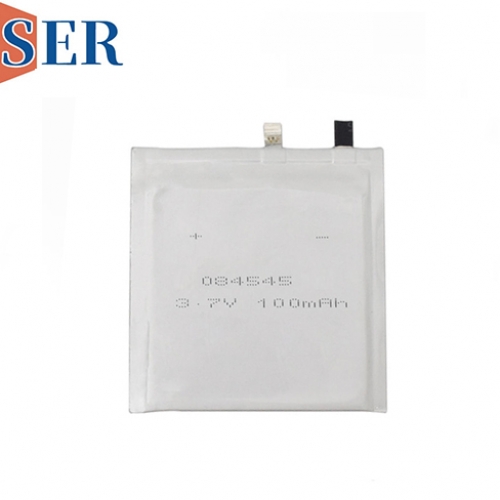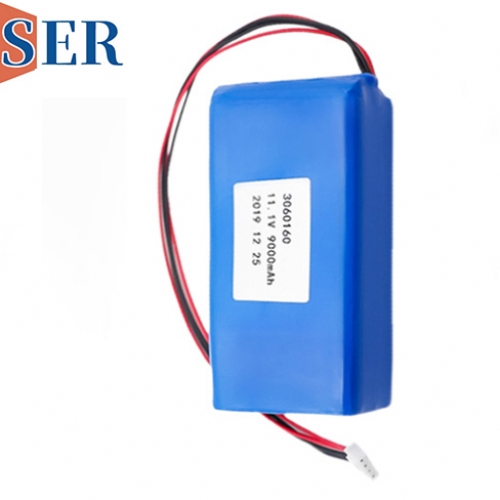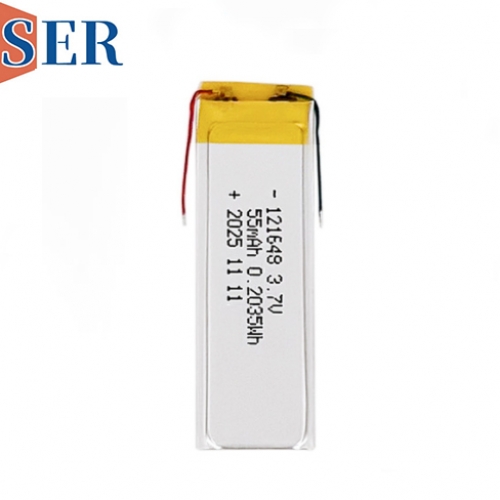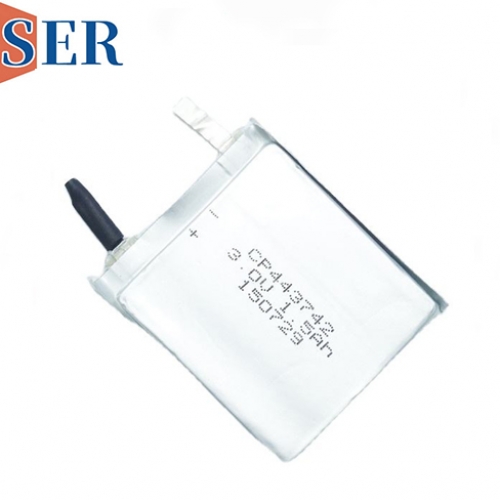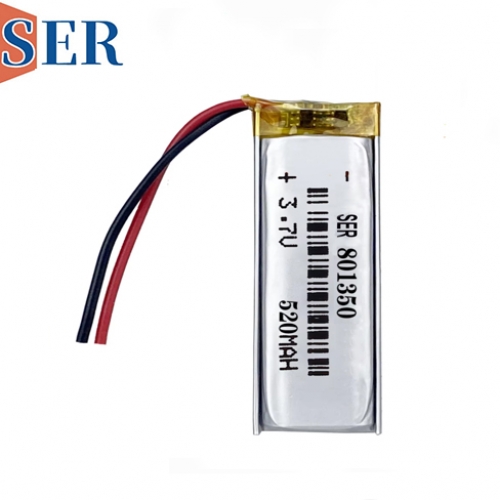3.7V 20mAh LP170630 Curved Ultra-Thin Lithium Polymer Battery: A Powerhouse for Smart Ring and Bracelet Wearables
The 3.7V 20mAh LP170630 Curved Ultra-Thin Lithium Polymer Battery: A Powerhouse for Smart Ring and Bracelet Wearables
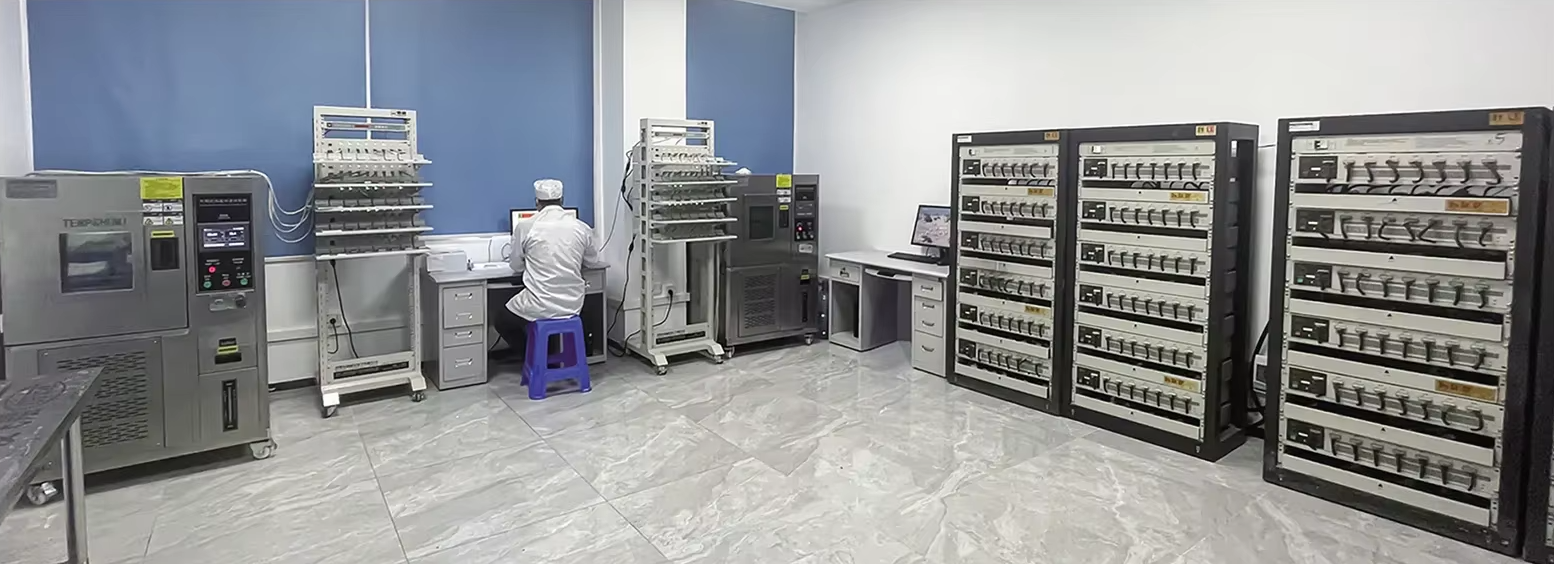
Abstract
In the ever-evolving landscape of wearable technology, smart rings and bracelets have emerged as popular choices for consumers seeking a blend of style and functionality. At the heart of these devices lies a crucial component: the battery. The 3.7V 20mAh LP170630 curved ultra-thin lithium polymer (LiPo) battery stands out as a key player in this domain, offering a unique combination of features that make it ideal for small wearable devices. This article explores the characteristics, advantages, applications, and future potential of this small LiPo battery, with a focus on its ultra-thin and curved design, and how it meets the demands of smart ring and bracelet wearables.
1. Introduction
The wearable technology market has witnessed a remarkable surge in recent years, driven by the increasing demand for devices that can seamlessly integrate into our daily lives. Smart rings and bracelets, in particular, have gained significant traction due to their compact size, ease of use, and the ability to provide a range of features such as fitness tracking, health monitoring, and notifications. To power these devices effectively, a small, lightweight, and high-performance battery is essential. The 3.7V 20mAh LP170630 curved ultra-thin LiPo battery fills this role perfectly, offering a solution that is both efficient and reliable.
2. Understanding the Small LiPo Battery: The LP170630
2.1 What is a Small LiPo Battery or ultrathin battery?
A small LiPo battery or ultrathin battery, like the LP170630, is a type of rechargeable battery that utilizes lithium polymer chemistry. Ultrathin LiPo batteries are known for their high energy density, which means they can store a significant amount of energy in a relatively small and lightweight package. This makes them ideal for applications where space and weight are critical factors, such as in smart rings and bracelets.
2.2 Key Features of the LP170630 Battery
Voltage and Capacity: The LP170630 battery operates at a nominal voltage of 3.7V, which is a standard voltage for many small electronic devices. With a capacity of 20mAh, it provides enough power to keep a smart ring or bracelet running for an extended period, depending on the device's power consumption.
Ultra-Thin Design: One of the most notable features of the LP170630 battery is its ultra-thin profile. This allows it to fit seamlessly into the compact form factor of smart rings and bracelets without adding significant bulk. The thin design also enhances the wearer's comfort, as the device feels lightweight and unobtrusive on the finger or wrist.
Curved Shape: The curved shape of the LP170630 battery is specifically designed to match the contours of smart rings and bracelets. This ensures a snug fit within the device's housing, minimizing any gaps or protrusions that could affect the aesthetics or functionality of the wearable. The curved design also helps to distribute the battery's weight evenly, further improving the wearing experience.
2.3 Advantages of Using a Small LiPo Battery in Wearables
Space Efficiency: The small size and ultra-thin design of the LP170630 battery allow for more efficient use of space within the smart ring or bracelet. This leaves room for other components such as sensors, processors, and communication modules, enabling the device to offer a wider range of features.
Weight Reduction: The lightweight nature of the LiPo battery contributes to the overall lightweight design of the wearable. This is important for user comfort, as a heavy device can be uncomfortable to wear for extended periods.
High Energy Density: Despite its small size, the LP170630 battery offers a relatively high energy density. This means it can store more energy per unit volume compared to other battery types, allowing the smart ring or bracelet to operate for longer on a single charge.
Flexibility in Design: The curved shape of the battery provides designers with greater flexibility in creating unique and stylish wearable designs. It can be integrated into various form factors, enabling the development of smart rings and bracelets with different shapes and sizes.
3. The Ultra-Thin Lithium Polymer Battery: A Game-Changer for Wearables
3.1 Importance of Ultra-Thin Batteries in Wearables
In the world of wearables, every millimeter counts. Consumers expect devices that are not only functional but also aesthetically pleasing and comfortable to wear. Ultra-thin lithium polymer batteries play a crucial role in achieving these goals. Their slim profile allows for the creation of sleek and stylish wearables that can be worn discreetly on the finger or wrist.
3.2 Technical Aspects of Ultra-Thin LiPo Batteries
Ultra-thin LiPo batteries are manufactured using advanced techniques that allow for the reduction of the battery's thickness while maintaining its performance. This involves using thin electrode materials, optimizing the battery's internal structure, and employing precise manufacturing processes. The result is a battery that is both thin and powerful, capable of delivering the necessary energy to power the wearable device.
3.3 Benefits of Ultra-Thin Batteries for Smart Rings and Bracelets
Enhanced Aesthetics: The ultra-thin design of the LP170630 battery allows for the creation of smart rings and bracelets with a slim and elegant appearance. This makes them more appealing to consumers who value both style and functionality.
Improved Comfort: A thin battery reduces the overall thickness of the wearable, making it more comfortable to wear for extended periods. This is especially important for smart rings, which are worn on the finger and need to be lightweight and non-intrusive.
Greater Design Freedom: Designers have more freedom to experiment with different shapes and sizes of smart rings and bracelets when using ultra-thin batteries. This can lead to the development of innovative and unique wearable designs that stand out in the market.
4. The Curved Lithium Polymer Battery: Tailored for Wearable Integration
4.1 Why a Curved Design Matters
The curved shape of the LP170630 battery is not just a cosmetic feature; it is a carefully engineered solution to the challenges of integrating a battery into a smart ring or bracelet. The curved design allows the battery to conform to the natural curves of the wearer's finger or wrist, ensuring a secure and comfortable fit.
4.2 Manufacturing Challenges and Solutions
Manufacturing a curved lithium polymer battery presents several challenges, such as ensuring uniform electrode thickness, maintaining battery performance during the bending process, and preventing internal short circuits. To overcome these challenges, manufacturers use specialized equipment and techniques, such as laser cutting, precision coating, and advanced battery management systems. These solutions ensure that the curved battery maintains its high energy density, reliability, and safety.
4.3 Advantages of Curved Batteries in Wearables
Better Fit and Comfort: The curved shape of the battery allows the smart ring or bracelet to fit snugly on the wearer's body, reducing the risk of the device slipping or moving around. This enhances the overall comfort and usability of the wearable.
Improved Aesthetic Integration: A curved battery blends seamlessly with the device's housing, creating a more integrated and visually appealing look. This is particularly important for smart rings, where the battery is an integral part of the ring's design.
Enhanced Durability: The curved design can help to distribute stress more evenly across the battery, reducing the risk of damage during normal use. This can improve the overall durability and lifespan of the wearable device.
5. Applications of the 3.7V 20mAh LP170630 Curved Ultra-Thin LiPo Battery in Smart Rings and Bracelets
5.1 Powering Fitness and Health Tracking Features
Smart rings and bracelets are often equipped with sensors to track fitness and health metrics such as steps taken, heart rate, sleep patterns, and calories burned. The LP170630 battery provides the necessary power to operate these sensors continuously or on demand, allowing users to monitor their health and fitness goals effectively.
5.2 Supporting Communication and Connectivity
Many smart rings and bracelets feature wireless communication modules, such as Bluetooth Low Energy (BLE), to connect with smartphones or other devices. The battery supplies the power required for data transmission and reception, enabling seamless connectivity between the wearable and the user's mobile device. This allows users to receive notifications, control music playback, and access other features directly from their smart ring or bracelet.
5.3 Driving Display and User Interface Components
Some smart rings and bracelets have small displays or user interfaces to show information such as time, notifications, or fitness data. The LP170630 battery powers these display and user interface components, ensuring that they are visible and responsive to user input. The battery's stable voltage output helps to maintain consistent display brightness and performance.
5.4 Enabling Haptic Feedback
Haptic feedback is a feature that provides tactile sensations to the user, such as vibrations, to indicate notifications or other events. The battery can power the haptic feedback mechanism in smart rings and bracelets, delivering a subtle yet noticeable vibration to alert the user. This enhances the user's interaction with the device and provides a more immersive experience.
6. Challenges and Considerations in Using the LP170630 Battery
6.1 Limited Capacity and Runtime
The 20mAh capacity of the LP170630 battery is a limitation in terms of the device's runtime. While it is sufficient for many smart ring and bracelet applications, devices with more power-hungry features, such as continuous heart rate monitoring or high-frequency data transmission, may require more frequent recharging. Manufacturers need to carefully balance the device's features and power consumption with the battery's capacity to ensure an acceptable user experience.
6.2 Temperature Sensitivity
LiPo batteries, including the LP170630, are sensitive to temperature extremes. High temperatures can accelerate the aging process of the battery, reduce its capacity, and even pose a safety risk. Low temperatures can decrease the battery's performance, reducing its ability to deliver power. Smart rings and bracelets may be exposed to a wide range of temperatures during normal use, such as when worn outdoors in hot or cold weather. Manufacturers need to consider temperature management strategies, such as thermal insulation or temperature compensation algorithms, to ensure the battery operates reliably in different environmental conditions.
6.3 Safety Concerns
Although LiPo batteries are generally safe when used properly, they can pose a safety risk if damaged, overcharged, or short-circuited. The small size and curved design of the LP170630 battery may make it more susceptible to damage during manufacturing, assembly, or normal use. Manufacturers need to implement proper safety measures, such as battery protection circuits, to prevent overcharging, over-discharging, and short-circuits. Additionally, they should follow strict quality control procedures during the manufacturing process to ensure the battery's integrity.
6.4 Cost Implications
The cost of the LP170630 battery may be higher compared to some other battery types due to its specialized design and manufacturing process. This can impact the overall cost of the smart ring or bracelet. Manufacturers need to carefully consider the cost-benefit ratio of using this battery and explore ways to optimize the device's design and features to justify the higher battery cost.
7. Future Trends and Developments in Small, Ultra-Thin, and Curved LiPo Batteries
7.1 Increased Energy Density
Researchers are constantly working on improving the energy density of LiPo batteries. By developing new materials and manufacturing techniques, they aim to increase the amount of energy that can be stored in a given volume. This could lead to the development of smaller, ultra-thin, and curved LiPo batteries with higher capacities, enabling smart rings and bracelets to operate for longer on a single charge.
7.2 Faster Charging Times
Another area of research is the development of faster charging technologies for LiPo batteries. This would allow smart rings and bracelets to be recharged more quickly, reducing downtime for the user. Advances in battery chemistry and charging algorithms could lead to significant improvements in charging speed in the future.
7.3 Enhanced Safety Features
As the demand for wearable devices continues to grow, safety will remain a top priority. Future LiPo batteries may incorporate enhanced safety features, such as advanced battery management systems, overcharge protection, and thermal runaway prevention mechanisms. These features would further improve the safety and reliability of small, ultra-thin, and curved LiPo batteries in smart rings and bracelets.
7.4 Sustainable Battery Solutions
With the increasing focus on environmental sustainability, there is a growing demand for more sustainable battery solutions. Research is being conducted on developing recyclable LiPo batteries and exploring alternative materials that are less harmful to the environment. In the future, we may see the development of curved ultra-thin LiPo batteries that are more sustainable and have a lower environmental impact, aligning with the broader trends in the wearable technology industry.
8. Conclusion
The 3.7V 20mAh LP170630 curved ultra-thin lithium polymer battery is a remarkable innovation in the field of wearable technology. Its small size, ultra-thin design, and curved shape make it an ideal power source for smart rings and bracelets, offering a combination of performance, comfort, and style. While there are challenges associated with its limited capacity, temperature sensitivity, safety concerns, and cost, ongoing research and development in battery technology are likely to address these issues in the future.
As the wearable technology market continues to evolve, the demand for small, ultra-thin, and curved LiPo batteries will only increase. Manufacturers, designers, and researchers need to work together to further optimize these batteries, improve their performance, and explore new applications. The LP170630 battery represents a significant step forward in meeting the power requirements of smart ring and bracelet wearables, and its future potential is promising. With continued innovation, we can expect to see even more advanced and efficient small LiPo batteries powering the next generation of wearable devices.

